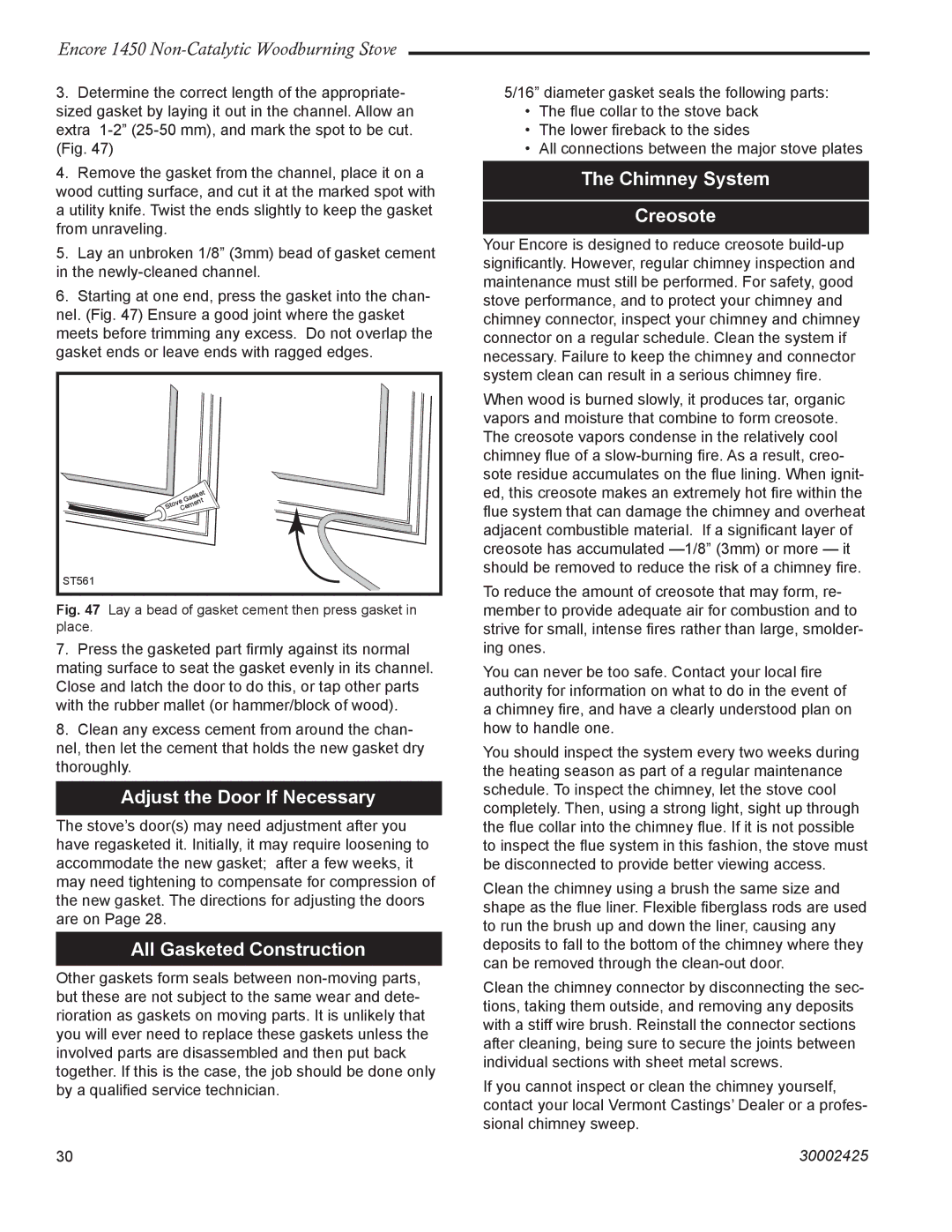
Encore 1450
3.Determine the correct length of the appropriate- sized gasket by laying it out in the channel. Allow an extra
4.Remove the gasket from the channel, place it on a wood cutting surface, and cut it at the marked spot with a utility knife. Twist the ends slightly to keep the gasket from unraveling.
5.Lay an unbroken 1/8” (3mm) bead of gasket cement in the
6.Starting at one end, press the gasket into the chan- nel. (Fig. 47) Ensure a good joint where the gasket meets before trimming any excess. Do not overlap the gasket ends or leave ends with ragged edges.
| Gasket |
| ve |
| Sto Cement |
ST561 |
|
Fig. 47 | Lay a bead of gasket cement then press gasket in |
place. |
|
7.Press the gasketed part firmly against its normal mating surface to seat the gasket evenly in its channel. Close and latch the door to do this, or tap other parts with the rubber mallet (or hammer/block of wood).
8.Clean any excess cement from around the chan- nel, then let the cement that holds the new gasket dry thoroughly.
Adjust the Door If Necessary
The stove’s door(s) may need adjustment after you have regasketed it. Initially, it may require loosening to accommodate the new gasket; after a few weeks, it may need tightening to compensate for compression of the new gasket. The directions for adjusting the doors are on Page 28.
All Gasketed Construction
Other gaskets form seals between
5/16” diameter gasket seals the following parts:
•The flue collar to the stove back
•The lower fireback to the sides
•All connections between the major stove plates
The Chimney System
Creosote
Your Encore is designed to reduce creosote
When wood is burned slowly, it produces tar, organic vapors and moisture that combine to form creosote. The creosote vapors condense in the relatively cool chimney flue of a
To reduce the amount of creosote that may form, re- member to provide adequate air for combustion and to strive for small, intense fires rather than large, smolder- ing ones.
You can never be too safe. Contact your local fire authority for information on what to do in the event of a chimney fire, and have a clearly understood plan on how to handle one.
You should inspect the system every two weeks during the heating season as part of a regular maintenance schedule. To inspect the chimney, let the stove cool completely. Then, using a strong light, sight up through the flue collar into the chimney flue. If it is not possible to inspect the flue system in this fashion, the stove must be disconnected to provide better viewing access.
Clean the chimney using a brush the same size and shape as the flue liner. Flexible fiberglass rods are used to run the brush up and down the liner, causing any deposits to fall to the bottom of the chimney where they can be removed through the
Clean the chimney connector by disconnecting the sec- tions, taking them outside, and removing any deposits with a stiff wire brush. Reinstall the connector sections after cleaning, being sure to secure the joints between individual sections with sheet metal screws.
If you cannot inspect or clean the chimney yourself, contact your local Vermont Castings’ Dealer or a profes- sional chimney sweep.
30 | 30002425 |
